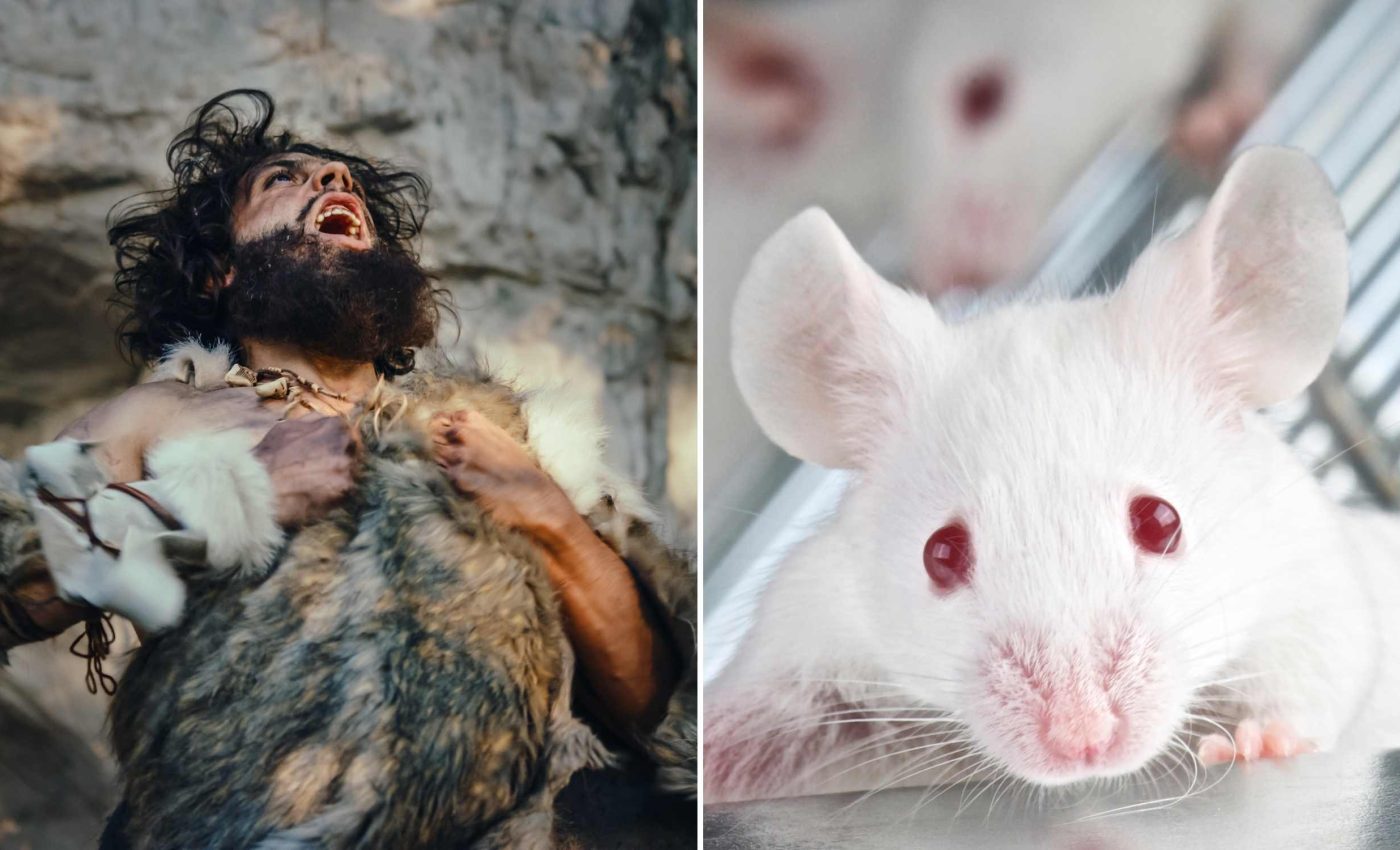
Scientists injected 40,000-year-old Neanderthal DNA into mice, resulting in very unexpected changes
Scientists recently injected a fragment of 40,000-year-old genetic material from Neanderthals (Homo neanderthalensis) into laboratory mice. They used the CRISPR method to insert an archaic variant of the GLI3 gene, which is linked to skeletal development.
The rodents soon showed noticeably altered bone structures and other unexpected traits.
The discovery was made possible by scientists at Kyoto Prefectural University of Medicine who introduced this ancient DNA segment to assess its role in shaping skeletal anatomy.
GLI3 gene and skeletal changes
A few of the mice who were edited with the GLI3 gene displayed wider craniums than their unmodified counterparts.
Some also presented a reduced number of vertebrae or unusual rib configurations that were consistent with the older genetic template.
Researchers drew attention to the fact that these modifications were not random anomalies, but specific skeletal features pointing to structural changes once found in extinct hominins.
The Hedgehog pathway, a key developmental system in mammals, did not show catastrophic disruption in these mice.
Instead, the archaic version of the GLI3 gene quietly adjusted how early bone patterning genes behaved, sparing the animals from severe birth defects yet nudging their skeletons in unexpected directions.
Genetic background influences
Scientists noted that these skeletal changes differed depending on each mouse’s broader genetic makeup.
Some mice on one background strain showed extra rib formation at the 14th thoracic position, while others had scoliosis-like rib angles. A fraction exhibited quicker fusion of skull plates, prompting a larger skull shape over time.
Interestingly, none of these mice exhibited polydactyly, a trait often linked to major GLI3 gene disturbances.
This finding suggests that the archaic variant managed to retain the gene’s essential functions while selectively modifying certain skeletal features, which likely mirrored developmental paths in archaic humans.
Modern traces of the GLI3 gene
This particular GLI3 variant, known as R1537C, still appears in some human populations outside Africa at rates between 3.7% and 7.7%, though it is much less common in other groups.
It is possible that in ancient groups with smaller population sizes, these changes persisted through genetic drift rather than strict adaptation.
In small-scale tests involving cultured human cells, the archaic gene shifted expression of certain downstream targets tied to bone growth.
These findings back the idea that a subtle but steady influence of archaic traits may endure in the broader human gene pool.
Views on ancient DNA
Neanderthals and Denisovans, both prehistoric relatives of modern humans, occasionally contributed genes to our ancestors. The presence of archaic DNA in living humans has been linked to various traits, including some skeletal features.
The newly edited mice offered a concrete glimpse of how small genetic differences might have forged physical contrasts among ancient populations.

Though the old mutation did not cripple the animals, it did reshape parts of their bodies.
A partial line from the original publication stated that the protein change “contributes to species-specific anatomical variations,” wrote the study’s authors. That statement highlights how subtle gene tweaks can mold skeletal architecture.
Why the GLI3 gene matters
The GLI3 protein sits at the crossroads of multiple developmental processes, but it is especially vital for shaping bones.
Studies on the GLI3 gene have revealed its involvement in conditions where limb or craniofacial structures form atypically.
Many of those disorders arise when the gene is fully inactivated, a far cry from this single amino acid switch.
Past examinations of other archaic DNA segments examined immunity and even pain responses.
This updated research extends such work into the realm of skeletal differences, showing that one minor coding change can produce noticeable effects.
It also underscores how ancient DNA, when tested in living models, provides a clear window on long-lost biology.
Skeletal insights from extinct DNA
Scientists who work with extinct human DNA rely on fossils and advanced genomics to piece together the puzzle of our origins.
Yet skeletal remains alone cannot show how each gene variant behaved during development. Rodent models like these can fill that gap, offering a living system to track gene function in real time.
This study highlights how archaic changes, buried in genetic code for tens of thousands of years, can still produce phenotypic impact.
Even if many such variations fell out of circulation, remnants linger in some modern genomes, adding subtle diversity to our species.
What happens next?
Researchers emphasize that more investigation is needed to confirm whether this arcane variant ever delivered a clear advantage for extinct populations.
Some evidence from biobank data suggests connections to spinal traits, but the small numbers make firm conclusions tricky.
Still, the success of this gene-editing work brings fresh awareness of our shared evolutionary links.
As new findings emerge, scientists will be better positioned to understand how each archaic segment contributed to the ancient human form, and what it might still mean for people today.
—–
Special thanks to Dr. Ako Agata and Dr. Tadashi Nomura at Kyoto Prefectural University of Medicine who led this important and fascinating study.
The study is published in Frontiers in Cell and Developmental Biology.
—–
Like what you read? Subscribe to our newsletter for engaging articles, exclusive content, and the latest updates.
Check us out on EarthSnap, a free app brought to you by Eric Ralls and Earth.com.
—–













